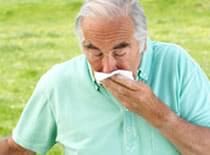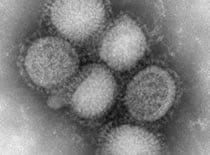Enchanted Kingdom
Thousands of people head south of Manila to spend a day of fun-filled relaxation and adventurous excitement within the American-style walls of Enchanted Kingdom, a 17-hectare world class theme park conveniently located in the outskirts of Sta. Rosa, Laguna.
Enchanted Kingdom, a short five-minute ride from the Sta. Rosa Tollgate of South Luzon Expressway, brings the closest version of Disney-type leisure in the country. The theme park, managed and operated by Amtrust Leisure Corporation (ALC), offers educational entertainment tours to students and "gastronomic treats" to families.
The P1.2-billion park, which has been operating since July 28, 1995 was conceptualized by Landmark Entertainment Group and designed after the Knott's Berry Farm, America's first amusement theme park located in Buena Park, California. It is a member of the International Association of Amusement Parks and Attractions (IAAPA). As such, it provides visitors with thrilling rides, stunning sights, and wondrous experience.
In the words of the Enchanted Kingdom operators, "the place is an active mix of thrills, attractions, entertainment, food service, celebrations and shopping set amidst an enthralling place that presents the past and the future, the quaint and the sophisticated, the picturesque and the dazzling in one unique package."
Enchanted Kingdom is an aggregate of seven theme zones: Victoria Park, Portabello, Brooklyn Place, Spaceport, Jungle Outpost, Midway Boardwalk, and Boulderville. These zones serve as enclaves to 21 thrilling rides and attractions meant to provide daring visitors with a sense of flight, twist, twirl, and other acrobatic stunts.
The rides include the Grand Carousel, Flying Fiesta, Rialto, Space Shuttle, Log Jam, Wheel of Fate, Condor, Up Up and Away, Roller Coaster, Anchors Away, Dodgem, Stone Eggs, Air Pterodactyl, Swan boats, and Bump n Splash. In the near future, the park is set to introduce other exciting rides such as the Kiddie Train Ride and the Rio Loco River Rapid Ride.
Aside from the rides, Enchanted Kingdom also charms its visitors with various treats such as the fireworks show every weekend, dance presentation by the park's in-house talents, theater shows, seasonal shows, well-manicured gardens, classic American brownstone facades and establishments, and a variety of characters and mascots led by the Wizard.
Manila
Rediscover Manila like you've never seen it before. Be charmed by the city's glorious past mirrored by its century-old churches, gallant forts, classic plazas, ancestral edifices, stately museums, and historic monuments. At the same time, relish the beauty of a modern city rising from the ruins of yesteryears. Beyond Manila's busy streets and crowded commercial centers lie festive joints that celebrate life.
The Old City
Manila, which was named after a white-flowered mangrove plant called nilad, was a tiny Malay settlement along the Pasig River ruled by Rajah Sulayman in the 16th century. The Spanish colonizers moved the capital of the Philippines from Cebu to Manila in 1571. They built the walled city of Intramuros, which for the next 300 years, was to become the nerve center of the Spanish rule.
Intramuros was the political and commercial center of the Spanish regime. From this walled city, the Spaniards extended their cultural and religious influences to the different parts of the country. They built churches, Catholic-run schools and universities, government buildings, and magnificent artifices, which reflect the Castilian architecture.
At the turn of the century, the Americans came and ruled the Philippines for 50 years. They introduced their own architecture, language, education and system of governance. During this period, Manila underwent a facelift. A blend of American and Spanish influences gave way to a new Manila, which was to evolve into a giant urban area known as Metro Manila.
Today, Metro Manila is an aggregate of 10 cities and seven municipalities.
Intramuros
Among the popular attractions in Metro Manila are Intramuros, Rizal Park, Binondo, Malacañang, Malate, the CCP Complex, Nayong Pilipino, Ayala Avenue, the Fort, Ortigas Center, Quezon Memorial Circle, and countless bars and restaurants scattered around the metropolis.
Traces of the Spanish influence still loom in Intramuros. A tour of this landmark will provide the visitors a deeper understanding of Manila's rich heritage. Intramuros protects within its walls a number of national treasures like the Fort Santiago (once a prison for revolutionary Filipinos, now a peaceful park-cum-museum), San Agustin Church (the oldest structure in the country with its Baroque interiors and trompe l'oeil murals), Manila Cathedral (a magnificent architectural feat with its intricate stone carvings, stained glass mosaics, and rosette windows), Casa Manila (a former colonial house and now a museum of national relics), and San Juan de Letran school.
Intramuros has been restored for the tourists. Today, it houses a museum, art galleries, an open-air theatre, fine restaurants, craft shops and souvenir stalls. It also keeps a park lush with tropical flora and homing pigeons. The park, Puerto Real, is the venue of Saturday musical performances during dry months.
Rizal Park
Just beside Intramuros is Rizal Park, a 60-hectare conglomerate of gardens, historical markers, plazas, an artist's sanctuary, a 1913 bronze monument of Jose Rizal, a grand stadium, an observatory, an open-air concert hall, a light-and-sound theatre, restaurants, food kiosks and playgrounds, with dozens of fountains. Fronting the northwest side of the park is Manila Hotel, whose lobby is one of the most imposing in the world. Along the park's bayside, tourists can have an unobstructed view of the fabled Manila Bay sunset.
A five-minute walk from Rizal Park is the National Museum, the official keeper and guardian of the country's cultural, historical and natural heritage. It houses the representative works of the National Artists, as well as the renowned paintings of Felix Resurreccion Hidalgo and Juan Luna. It puts on display some prehistoric finds, including the Tabon skullcap, pottery, ceramics and other artifacts from China and Indochina and remnants of pre-Hispanic boats that brought Malay immigrants to the Philippines dating to about 1250. Other establishments worth visiting in the area are the Metropolitan Theater and the National Library.
Binondo Area
Across the Pasig River from Intramuros is the Binondo area, home of Chinatown. The district is filled with all things Chinese from Peking duck and Buddhist temples to gold watches, snake soup, and wonder herbs. The high chords of Chinese songs and the permeating smell of incense complete the uniquely Chinese ambiance. It is said that this quaint district was already a hub of Chinese commerce even before the Spaniards came in 1571.
In particular, Ongpin offers a lot of variety: restaurants, pet shops, bakeries, grocery stores, jewelers, traditional medicine shops, acupuncture clinics, kung-fu schools, and mahjong parlors. Ongpin leads to Plaza Santa Cruz, which is where Rizal Avenue curves to meet the MacArthur Bridge. Escolta, now a shadow of its former self, leads off from here. The plaza is dominated by Santa Cruz Church.
Malacañang
From Escolta, one can proceed to the San Miguel district, known for its Spanish-style houses and the Malacañang Palace, seat of the Philippine government. This ornate Spanish colonial palace, with its arches and balconies, was built as a private country house in the late 18th century and purchased by the government in 1825. At first the governor-general's summer residence, it became his permanent residence in 1863, after the Palacio Real in Intramuros was destroyed by an earthquake. In 1986, the palace museum was opened for the public. Visitors are advised to call first. The telephone number is 521-2307.
The CCP Complex
The Cultural Center of the Philippines (CCP) Complex is the arts center of the country. Located along Roxas Boulevard in Pasay City, this is the premier venue for ballet presentations, concerts, stage plays, performances, exhibits and trade fairs. Inaugurated in 1969, the CCP comprises a fine concert hall seating 2,000 plus an intimate 400-seat theater as well as a library, museum, art gallery, and an upscale restaurant. The lobby is opulent, with marble floors, curving staircases, and glass and kapis-shell chandeliers.
Also within the complex is the Coconut Palace, an architectural wonder made from the coconut tree mixed with other indigenous material. The Philippine International Convention Center (PICC), the Product Design and Development Center, the Folk Arts Theater, Philippine Center for International Trade and Exhibitions (PHILCITE), Westin Philippine Plaza Hotel and Manila Film Center are also found here.
Beside the CCP Complex is the World Trade Center, while fronting it is the Bangko Sentral ng Pilipinas (BSP) building. The BSP houses two museums: the Money Museum, which showcases excavated antique gold jewelry and the Metropolitan Museum, a repository of classic Filipino paintings and a host of rotating international art exhibitions.
Roxas Boulevard is also lined up by de-luxe and standard hotels, lively nightclubs, and the Cuneta Sport Center, home of the Philippine Basketball Association (PBA).
Parks and Zoos
From the CCP complex, one can proceed to Nayong Pilipino. This 32-acre theme park is also just a 10-minute drive from the Ninoy Aquino International Airport (NAIA). The park features scaled-down replicas of the country's top tourist destinations such as Mayon Volcano, the Banaue Rice Terraces and the Chocolate Hills.
A smaller park, which offers a venue for relaxation is also within close distance. The Paco Park, which was built as a cemetery in 1820, is now a frequent site of mini-concerts and musical performance by the country's finest artists.
The park is surrounded by trees and plants, which are properly identified. Behind the park is the Paco Hong Giarn Taoist Temple. Nearby are the New Swiss Inn, with bar, restaurant, and delicatessen, and the Park Hotel, with lounge, restaurant, and swimming pool.
Not far from the area is the Manila Zoo on Adriatico street. Manila Zoo, the country's largest and oldest, hosts international and indigenous animal species such as the Tamaraw and Philippine crocodile. It is open everyday from 8 a.m. to 6 p.m.
The northern part of Metro Manila takes pride in maintaining two animal sanctuaries, Parks and Wildlife Nature Center and the Malabon Zoo. The former, located at the corner of Quezon Ave. and the Elliptical Road in Quezon City serves as the protection center for exotic animals confiscated from smugglers and illegal collectors.
A stone's throw away is the Quezon Memorial Circle, a park noted for its 30-meter-high monument of former President Manuel Quezon. Its underground chambers house the Quezon City Museum and Art Gallery. The Malabon Zoo and Aquarium, located along Gov. Pascual Avenue in Potrero, Malabon also has a collection of interesting fish and animals. It is open everyday from 8 a.m. to 5:30 p.m.
In Makati City, an air-conditioned zoo at the Glorietta mall is frequently visited by parents and their small children. The area also has a small playground.
Commercial Districts
South of Manila is Makati City, considered as the financial capital of the country. Along Ayala Avenue rise modern skyscrapers, which are home to multinational companies, foreign embassies and local banks. The trendiest leisure spots - hotels, restaurants, bars, music lounges, fashion boutiques and department stores - converge around the sleek Ayala Center. Across EDSA is the posh subdivision of Forbes Park, home of the country's rich and famous. One area that now competes with Makati in terms of its modern architectural landscape is the Ortigas Center between Mandaluyong City and Pasig City. Home to the Asian Development Bank (ADB), it is also the site of three of the country's richest shopping malls - SM Megamall, Robinson's Galleria, and Shangri-la EDSA Plaza.Also within Ortigas is the striking leisure enclave, Saint Francis Square, with its fine restaurants and fashionable music lounges.
Suburbs
The town of San Juan, just next to Manila, boasts of its large mansions and modern houses. It is home to some of the richest Filipinos, including the present president. Quezon City is the site of many government installations, leading universities, and television stations. Marikina City, on the other hand, is considered as the shoe capital of the Philippines. It takes pride in having maintained a clean river, planked by greens.
Las Piñas City in the southern part of Metro Manila has retained much of its provincial appeal. Its main attraction, however, is the world-famous bamboo organ, found in the town's picturesque Catholic church. The centuries-old musical instrument was constructed between 1792 and 1819. It has 174 bamboo pipes, 122 horizontal reeds of soft metal, a five-octave keyboard, and 22 stops arranged in vertical rows. The church is open daily except Sunday morning.
Best Buys
As a shopping haven, Metro Manila offers almost all kinds of products, from the most fashionable to the rarest items. And they can be found almost anywhere, in the most luxurious department stores as well as in small bargain shops. Depending on the traveler's budget, there is always a place where one can find the best buys. The giant shopping malls, SM, Robinson's, Glorietta, Shangri-la, and Rustan's, carry most of the well-known international labels. They also have stores, which sell the best of Filipino products.
Unique souvenirs are being sold at Silahis in Intramuros, and SM Department Store, Makati Commercial Center and Landmark in Makati City. The best place to search for Philippine handicrafts are "Ilalim ng Tulay Market" on Carlos Palanca Street, and the handicraft stalls at Nayong Pilipino. For antique collectors, the best spots to visit are Padre Paura, Ermita and Intramuros.
Attractive buys are also available in the metro's flea markets, such as Quiapo, Tutuban and Divisoria in Manila and Baclaran in Parañaque. Bargain-hunters will surely have a feast while picking from the widest collection of fabrics, RTWs, home furnishings, bags, shoes, watches, handicrafts, office supplies and other interesting items.
**http://www.txtmania.com/trivia/tourism.php
 How long can influenza virus remain viable on objects (such as books and doorknobs)?
How long can influenza virus remain viable on objects (such as books and doorknobs)? What household cleaning should be done to prevent the spread of influenza virus?
What household cleaning should be done to prevent the spread of influenza virus? What is the best way to keep from spreading the virus through coughing or sneezing?
What is the best way to keep from spreading the virus through coughing or sneezing? What are the signs and symptoms of this virus in people?
What are the signs and symptoms of this virus in people? Why is this new H1N1 virus sometimes called “swine flu”?
Why is this new H1N1 virus sometimes called “swine flu”?